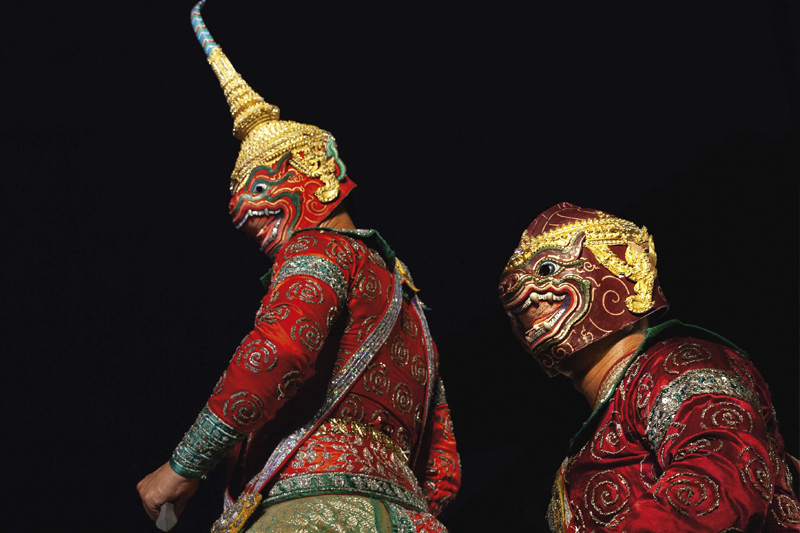
Behind the Seans & Khon Theatre
In Khon theatre, dance artistry, live music, and stage costumes all come together to keep a Thai tradition alive.
Words and Photos Yvan Cohen
Though you might not recognise the term Khon, you have probably seen images of the traditional dance. Its ornate costumes, its highly stylised gestures and colourful pageantry have become well-known emblems of Thai culture.
Khon performances can be bewitching in its dramatic staging. The rich storyline is derived from a Thai version of the Hindu Ramayana, known as the Ramakien or ‘The Glory of Rama’. It recounts the exploits of the Hindu gods Vishnu, Rama and his consort Sita; with pitched battles between armies of Hanuman monkey warriors and fierce ogres.
Indeed, perhaps the most famous version of the Ramakien was partly written by King Rama I in 1797, and later revised by his son Rama II.
Today, Khon has become a popular art and a much-loved tradition that is fostered and developed by the government’s Fine Arts department which trains and maintains its own company of Khon performers at the National Theatre, not far from the Royal Palace. Its overall effect relies on veteran artisans who still have to take needle to thread to make the elaborate costumes.
This specialised group of artisans deftly sew the intricate patterns that define the look of Khon costumes, donned by thespians graceful in the dance arts movements who interpret the story as precise as the embroidery itself.
To witness a Khon performance is a once-in-a-lifetime experience that will connect you to one of Thailand’s most iconic and beautiful traditions and the radiance of its costumes. The poise, drama and beauty in Khon are the perfect antidote to the frenetic pace of modern Bangkok.
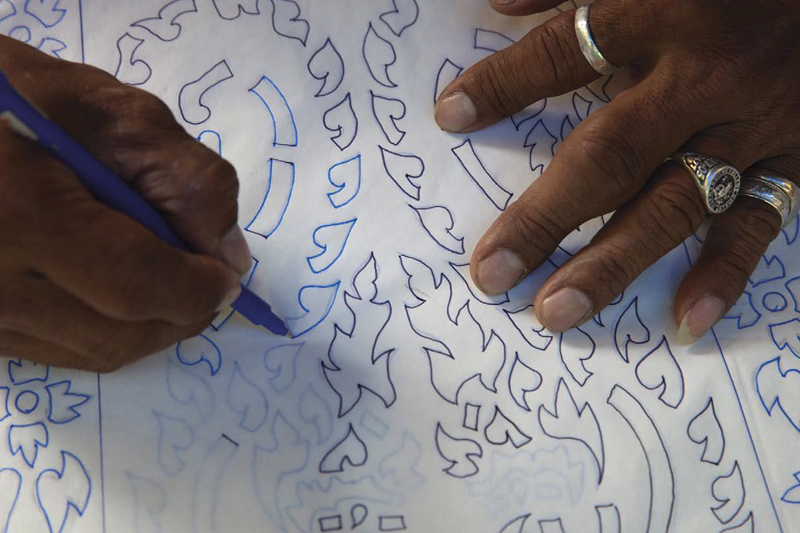
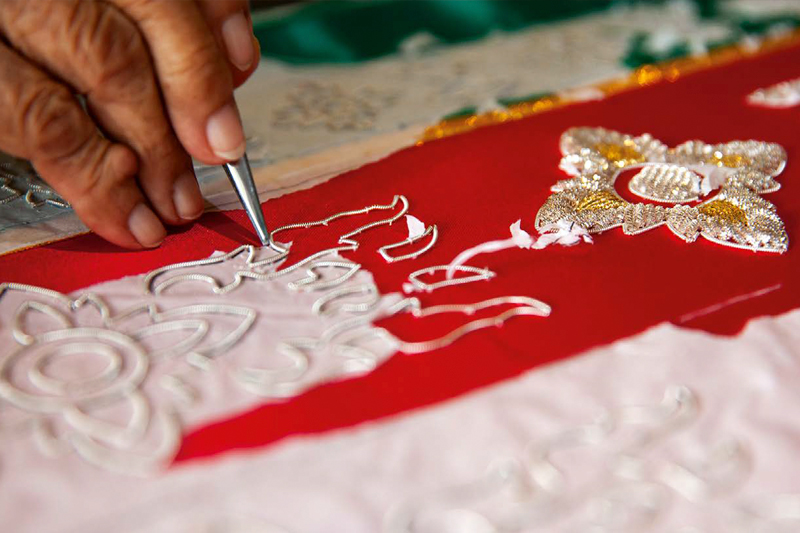
Traditional motifs distinctive in Khon costumes are expertly drawn by hand in a precise pattern.
While each design may not have a significant meaning, the characters who wear them vary – from princes to monkey gods or ogres.

Mae Piak and other groups of artisans prove that as the world hurtles towards modernity, there is still a determination to bring the traditions along with it.
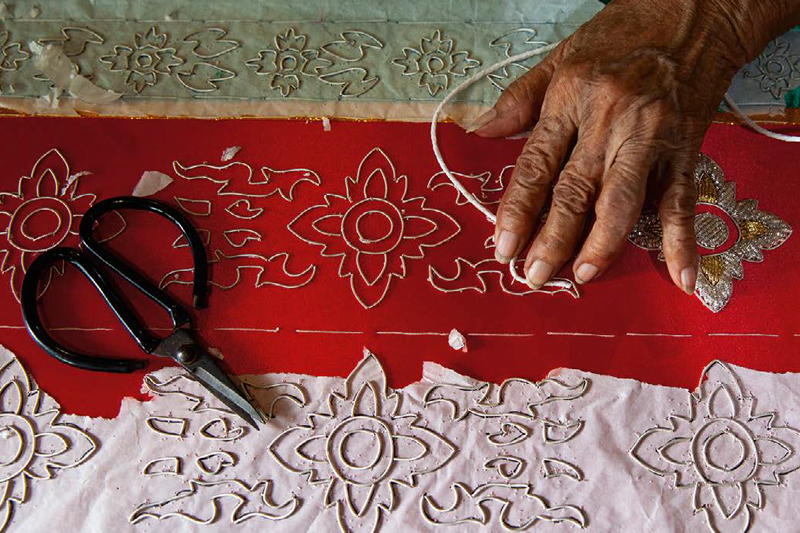

The craft masters quietly carry out an art that is a direct continuation of a cultural heritage that stretches back to 18th century, or probably even further back.
Graceful threading conveys the attention to detail and planning that goes into one of several patterns in an outfit.

Each step and accessory share the same trait of being exact in design, intricately carried out to become works of art.
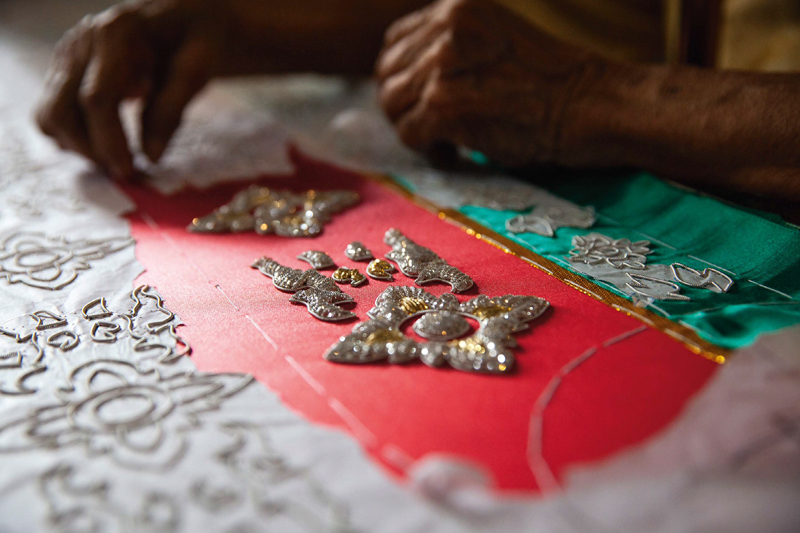
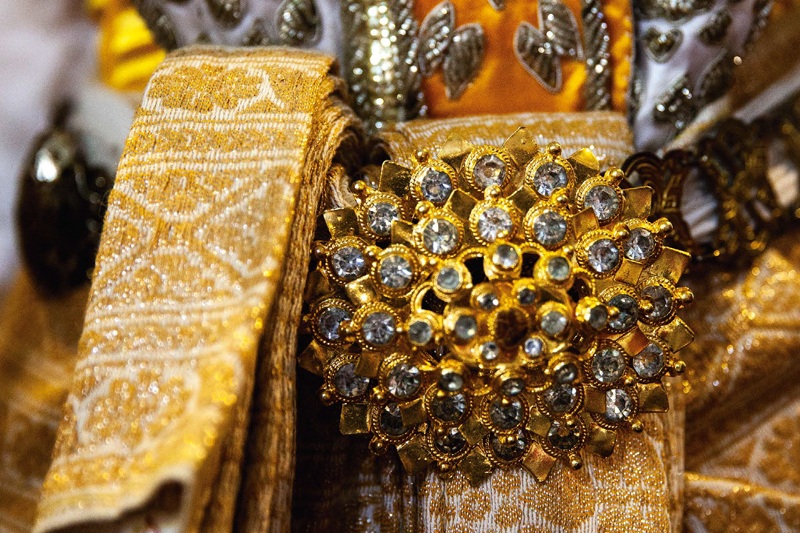
Creased and leathery with age, an elderly woman’s fingers move nimbly as she threads a row of tiny beads onto a needle.
Such embroidery skills have been honed in a career that has already spanned for 60 years.
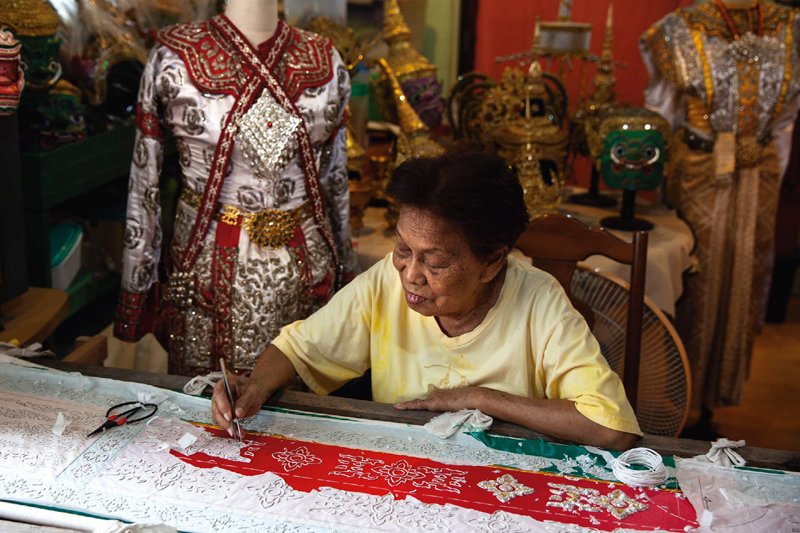
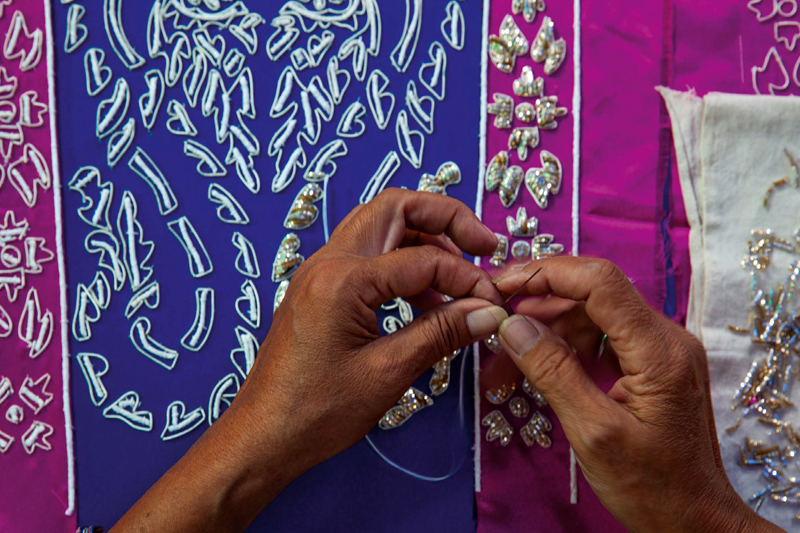
80-year-old master embroiderer Mae Piak completes a delicate move with ease on a stretch of material that will be transformed into a glittering costume.
There is no technology there, only skill, artistry and immense patience.
